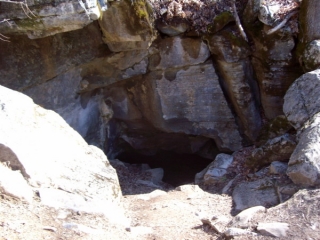Routine Amazement
I like oxymorons, and I recognize that my term “routine amazement” is one. I think the history below does illustrate how today’s wonder and amazement become tomorrow’s “so what?” acceptance.
As a person living in the U.S. starting in 1936, I have experienced amazement quite a number of times now. When I was born, there were already many things that had amazed earlier people, but as part of ordinary life they were not amazing to me. We already had:
- Electricity (and various uses and appliances)
- Radio (my favorite show was “The Lone Ranger”)
- Repeating rifles (came into use in the Civil War and benefitted the Union army)
- Motion pictures
- Automobiles
- Air travel (commercial flights just beginning)
- Telephones (mostly local and “party lines”)
- Cameras
- Vaccines (smallpox, tetanus, rabies, typhoid)
- Typewriters
Of course, the old people living when I was born had experienced each and all of these amazements previous to my arrival. There was no need for my amazement since I was privileged to simply accept them as routine and perhaps be happy as each was improved over time.
So, beginning with me (if I may put it that way), the newer (new for me, of course) amazements begin. These have included:
- Nuclear power and the atomic bomb
- Penicillin and antibiotics
- Television
- Landing on the moon
- Personal computers
- The Internet
- Mobile phones
- The smartphone (consisting of a mobile phone and hand-held personal computer)
This brings us to artificial intelligence (AI) which is my latest amazement.
I am a paid subscriber to Open AI’s “ChatGPT” and it is the best $20 per month subscription I have. I use it every day and sometimes for hours at a time. It faithfully keeps a record of these conversations, and I often refer back to them. I don’t use AI to write for me, although it/he/she/them does offer regularly to do that. I like my own writing style. But it would be quite possible to for a future writing AI to first read everything you have written in sequence and then replicate your writing style for future use. As it is now, I can almost always detect when I am reading something by an AI author.
My latest AI amazement is in the realm of images and art. Open AI used to use a program called DALL-E for image creation. It was okay most times but frustrating at others. Just recently this program was replaced, and the replacement is . . . you know, amazing. I’d like to illustrate.
At the YMCA pool this morning I noticed a small drawing by a swim team member on one of their whiteboards that usually holds workout schedules. It was an imaginary little seascape with a bunch of plants and animals. A friend and I were discussing it and I got an idea. I made its picture, brought it home, and showed it to AI. First, let me show you the swim team drawing itself, then the results of my AI discussion.
The person who made this drawing had imagined an ocean filled with plants and animals. I showed the drawing to AI and asked for a color picture with “real” creatures like these. After a number of iterations, we arrived at the following. This might have taken 10-15 minutes. Do note the photographic quality of these images. Amazing.
Next we discussed a version with the animals appearing as cartoon characters.
And finally, I asked for another version in a less photographic and more impressionistic mode. We finalized the third and last version of the drawing in less than a half hour total time. Just amazing.
While I am still amazed at this trio of images, I’m using them as screen savers on the monitors of my study computer. Where I am writing this, ha!
I have a good friend who writes competitive proposals for large government contracts. He tells me that AI has revolutionized his work and greatly shortened the time each project requires.
I do recognize that artificial intelligence can and will be used for bad as well as good. This has also been the case for nuclear power, television, smartphones, the Internet, and all those other previous amazements.
Let’s hope for the best. And work toward it too.








